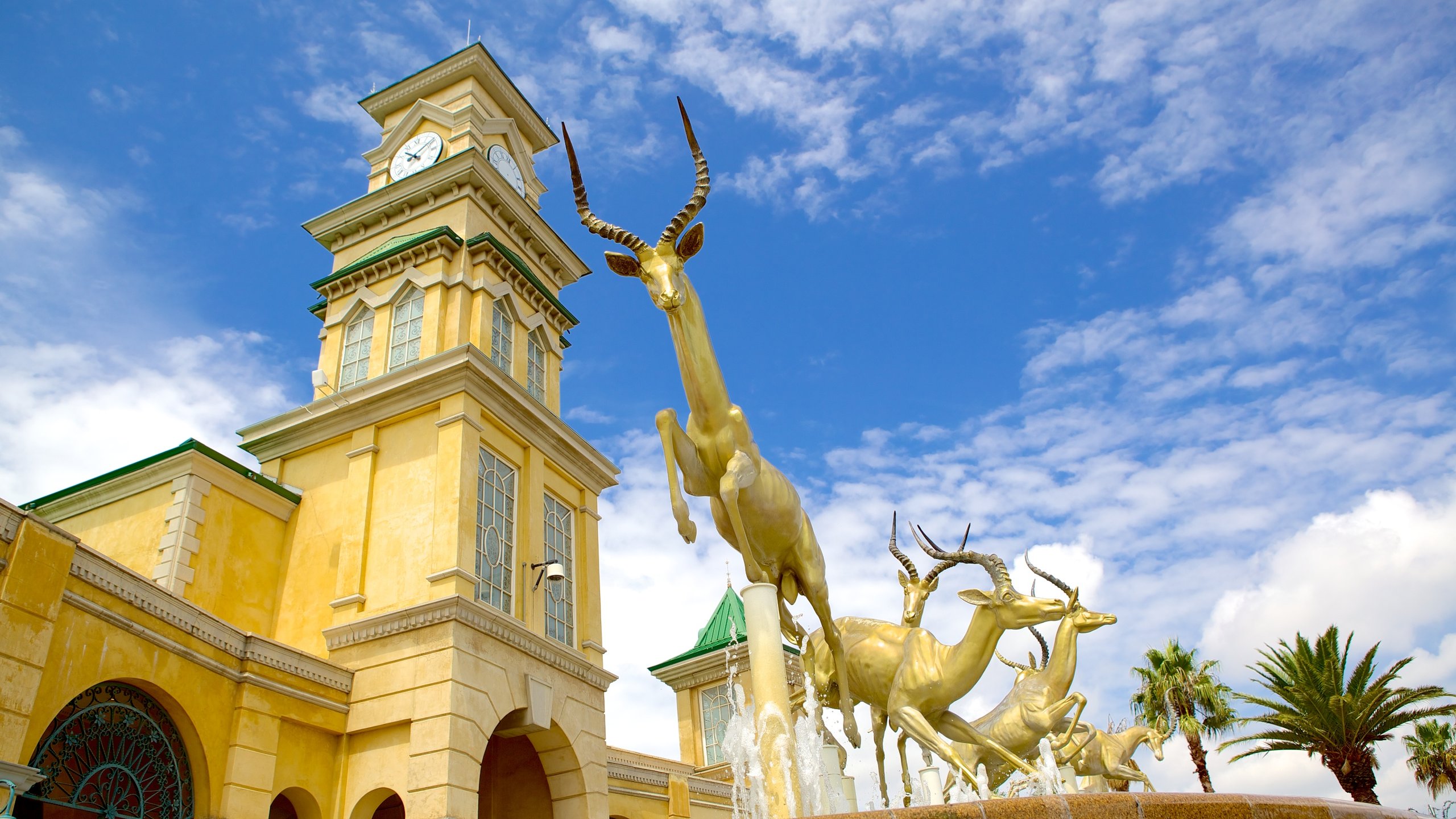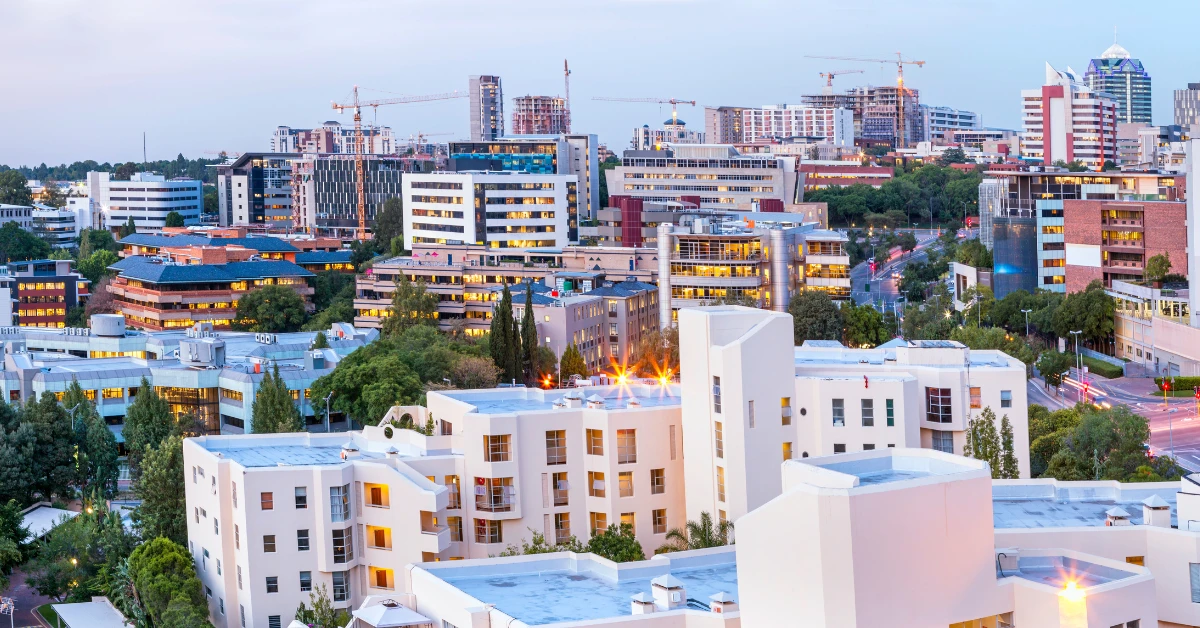The 4-Minute Rule for Johannesburg North Attractions
The 4-Minute Rule for Johannesburg North Attractions
Blog Article
The Single Strategy To Use For Johannesburg North Attractions
Table of ContentsWhat Does Johannesburg North Attractions Mean?An Unbiased View of Johannesburg North AttractionsA Biased View of Johannesburg North AttractionsSome Ideas on Johannesburg North Attractions You Should Know6 Simple Techniques For Johannesburg North AttractionsJohannesburg North Attractions Fundamentals Explained
The city expanded on the edge of the Witwatersrand Main Reef, a subterranean stratum of gold-bearing quartz-silica empire that arcs for hundreds of miles beneath the Highveld - Johannesburg North attractions. Most of the gold mines in the city discontinued operation in the 1970s, however in its day the Witwatersrand gold sector accounted for even more than 40 percent of the world's yearly gold manufacturing.Johannesburg has a warm climate. Summer temperatures average concerning 75 F (24 C); winter months temperature levels average concerning 55 F (13 C) and just sometimes dip below cold. The city appreciates concerning eight hours of sunshine per day in both winter months and summer. Rainfall standards concerning 28 inches (700 millimetres) per year, but the total differs considerably from year to year.
What rain the city receives falls practically specifically in the summertime months, often in incredible late-afternoon electric storms., where lots of homeowners still rely on coal for fuel.

Indicators on Johannesburg North Attractions You Need To Know
The equilibrium of the city is occupied by whites. Holiday accommodation varies in character and quality.
Physical growth, although somewhat limited by transportation, continued rapidly as immigration to South Africa, and Johannesburg in specific, raised substantially.
Most inadequate suburban areas were mixed, with bad blacks and whites cohabiting, although the rich suburbs were typically reserved for whites. This changed with the political election of the National Celebration in the 1948 elections, who started to formalise the system recognized as racism. Racism formally designated which residential areas each race can stay in under the Group Locations Act.
The approximated population of the area is 200,000, [] The number of individuals living in the inner city on a casual basis is unidentified, as numerous are prohibited immigrants. A lot of higher-income locals and white people have transferred to the northern suburbs and have actually been replaced by lower-income black people. The unemployment, education, and age profiles of the location are all unknown, due to the problem of getting reliable info concerning the location.
The Facts About Johannesburg North Attractions Revealed
Yeoville and Bellevue have top article a mix of apartment and single domestic units on small lots. The area is located on a mountainous divide that runs from east to west. The most obvious geographical function is Observatory Ridge, which is called for the huge observatory located on it. The recreational spaces are no more used, as a result of protection problems.

The Only Guide for Johannesburg North Attractions
R. Tambo International Airport). The eastern suburbs are several of the earliest locations of Johannesburg, there are huge neighborhoods of Jewish and other European histories, the majority of the populace is English talking. There are 3 fairway as well as a variety of safeguarded ridges with viewsites. There are numerous strong and up-market enjoyment and buying areas in the east such as the Eastgate Mall and navigate to this website the Greenstone shopping center.
The location is primarily composed of old "matchbox" residences, or four-room houses developed by the government, that were constructed to provide low-cost accommodation for black workers throughout apartheid. Soweto is an abbreviation, meaning "South Western Townships". Street after road around is lined with matchboxes; however, there are a few smaller sized areas where flourishing Sowetans have constructed houses that are a lot more similar in stature with those in even more wealthy suburban areas.
Hostels are another noticeable physical feature of Soweto. Initially constructed to house male migrant workers, several have been enhanced as residences for couples and family members. The N1 Western Bypass skirts the eastern boundary of Soweto. The residential area was not historically enabled to develop employment centres within the area, so nearly all of its locals are travelers to various other parts of the city.
How Johannesburg North Attractions can Save You Time, Stress, and Money.
The domestic locations in the northern residential areas are mainly official, with no substantial locations of casual housing, or housing that does not have an irreversible structure. This is a recognized location, there is a pattern of land use adjustment from domestic to business, specifically along primary arterial roads and around well-known nodes.
Roadways to the home eastern and west are less well created, as there are no freeways taking a trip in that instructions. Towards the north boundary of the city, the density of advancement lowers, leaving large locations of undeveloped land around Midrand.
The Ultimate Guide To Johannesburg North Attractions
The initial residential area to the north of the internal city is Parktown, which lies on a hillside ignoring the internal city and Hillbrow. It has lots of well-off residents and Edwardian-style estates, in addition to the Education and Clinical schools of the College of the Witwatersrand. The big concrete Charlotte Maxeke Johannesburg Academic Health Center controls the skyline of Parktown.
Report this page